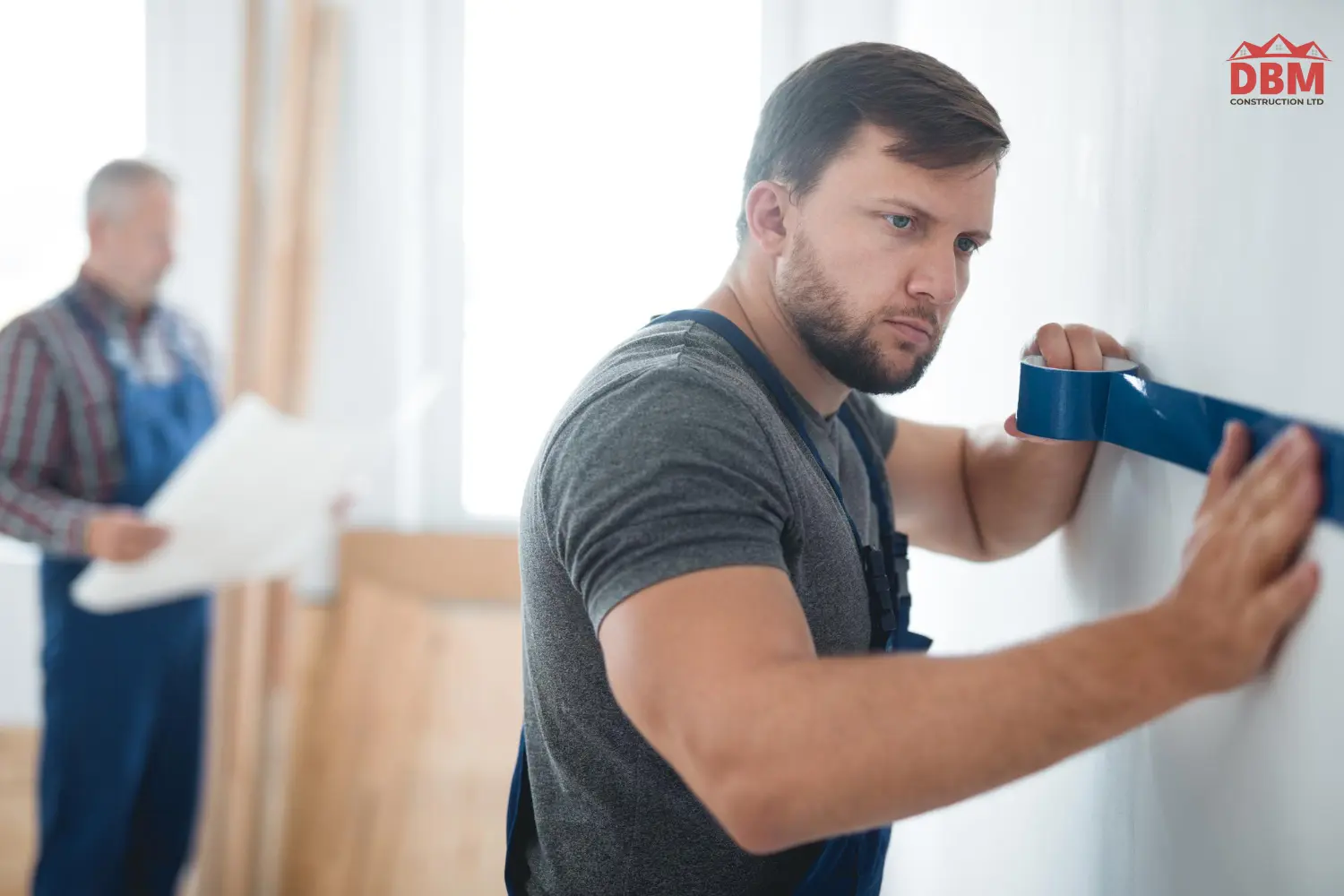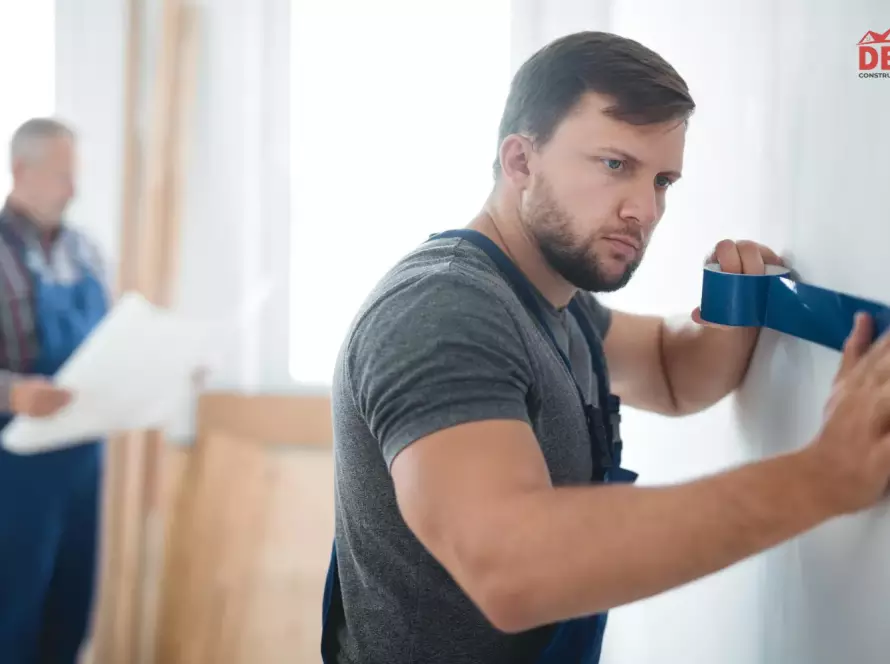Drywall taping is what gives walls their smooth, seamless finish. It covers the joints between drywall sheets and creates a surface that is ready for painting.
Without proper taping, those seams remain visible, and over time, cracks and imperfections start to appear. A well-done taping job does not just improve the appearance of the walls. It also strengthens them and helps them last longer.
This is especially important in Calgary, where temperature swings and dry air cause materials to expand and contract. If the taping is not done correctly, these shifts can lead to peeling tape, uneven seams, and cracks that only get worse over time.
What might seem like a small issue now can quickly turn into costly repairs later.
The key to a flawless drywall finish is using the right materials, applying proper techniques, and paying attention to detail. When taping is done right, walls stay smooth, strong, and built to last.
What Is Drywall Taping?
Before we talk about why drywall taping matters, let’s understand what drywall taping actually is.
Drywall taping Calgary is the process of covering the joints between drywall sheets to create a smooth and even surface. It is an essential step in finishing walls and ceilings, ensuring that seams do not show after painting.
The process involves applying joint tape over the seams and covering it with layers of drywall compound. Once the compound dries, it is sanded down to create a seamless finish.
Types of Drywall Taping
There are two main types of drywall taping, each with its own advantages depending on the project. Choosing the right one is important for achieving a smooth, long-lasting finish.
- Paper Tape
Paper tape is the most common type used in drywall taping. It is a thin, non-adhesive strip that must be embedded into drywall compound. When applied correctly, it creates strong, long-lasting seams that resist cracking.
- Works best for flat seams and inside corners
- Provides superior strength compared to mesh tape
- Requires proper application to prevent bubbling or peeling
- Mesh Tape
Mesh tape is made from fiberglass and has a self-adhesive backing, making it easier to apply. Unlike paper tape, it does not require an initial layer of drywall compound before placement.
- Ideal for quick repairs and beginner-friendly applications
- More resistant to moisture, making it a good choice for bathrooms and basements
- Not as strong as paper tape and more prone to cracking over time
Both types have their place in drywall finishing. Paper tape is best for durability, while mesh tape is easier to apply and great for small repairs.
Note: Choosing the right type depends on the project and the conditions of the space being finished.
Why Proper Drywall Taping Matters for Calgary Homes
Drywall taping is essential for creating strong, seamless walls that last. It prevents cracks, reinforces drywall, and ensures a smooth surface for painting. When done correctly, it enhances durability and minimizes the need for future repairs.
1. Prevents Cracks from Forming
Temperature changes put stress on drywall seams. Without proper drywall taping Calgary, these joints weaken, causing cracks that spread over time. These cracks may start small, but they can expand, making walls look worn and requiring frequent touch-ups. Proper taping reinforces joints, allowing them to flex without breaking, ensuring walls remain intact, even as the building naturally settles.
2. Creates a Smooth, Seamless Finish
A wall may be solid, but if seams and imperfections are visible, it still looks unfinished. Poor taping leaves behind ridges, bumps, and uneven surfaces, which become even more noticeable after painting. When tape is embedded correctly, and multiple layers of drywall compound are applied and sanded smooth, walls look polished and professional. Whether the goal is a simple painted wall or a high-end textured finish, quality taping is what makes the difference between an amateur job and a professional result.
3. Increases Wall Durability
Drywall is not just about appearance. It needs to hold up to daily use, furniture bumps, and general wear and tear. Weakly taped seams are vulnerable to separation, which can lead to chipping, peeling, and long-term damage. Proper taping strengthens these joints, ensuring walls remain sturdy even in high-traffic areas. This is especially important in homes with kids or pets, where walls often endure extra strain. When done correctly, drywall taping provides the durability needed for walls to stay in good condition for years.
4. Helps Resist Moisture Damage
Water is one of drywall’s biggest enemies. If moisture seeps into poorly taped seams, it can lead to mold, mildew, and weakened drywall panels. This is a major concern in areas like bathrooms, basements, and kitchens, where humidity levels fluctuate. Using the right taping materials and sealing techniques creates a protective barrier that helps prevent water infiltration. Through keeping moisture out, proper drywall taping extends the lifespan of walls and helps maintain a healthier indoor environment.
5. Saves Money on Repairs
Fixing drywall is costly, especially when problems arise from poor workmanship. If taping is rushed or done incorrectly, cracks, peeling tape, and uneven surfaces appear sooner than expected. This leads to additional labor and material costs, as the taping must be redone. Homeowners who invest in quality taping from the start avoid these recurring issues, ultimately saving money. Basically, a well-taped wall requires less maintenance and stays in good condition longer, making it a cost-effective choice in the long run.
6. Improves Insulation and Energy Efficiency
Most people do not associate drywall taping with insulation, but it plays a role in maintaining indoor temperatures. Gaps in drywall seams allow air leaks, which force heating and cooling systems to work harder to regulate the home’s climate. Tightly sealed drywall helps keep warm air in during winter and prevents heat from entering during summer. This improves energy efficiency, reduces utility bills, and contributes to a more comfortable living space.
7. Enhances Property Value
A home with smooth, well-finished walls creates a strong first impression. Buyers and appraisers notice visible seams, uneven textures, and cracks, which can lower a home’s perceived value. In contrast, properly taped drywall adds to a home’s overall appeal and gives it a professional, high-quality finish. Well-maintained walls show that a home has been cared for, making it easier to sell at a higher price. Investing in quality taping not only improves the present appearance of a home but also boosts its long-term marketability.
TL;DR: Proper drywall taping ensures durability, a flawless finish, and long-term protection against cracks and damage.
How Much Does Drywall Taping Cost?
The cost of drywall taping depends on the size of the project, labor rates, and materials used.
On average, professional drywall taping costs between $1.50 to $3.50 per square foot, but total project costs can vary based on complexity and wall conditions.
Here’s a general estimate of what homeowners can expect to pay:
- Small repair or patchwork: $150 – $500
- Single room (walls and ceiling): $500 – $2,500
- Full home drywall taping: $5,000 – $15,000+
Factors like wall height, the number of coats needed, and any necessary prep work can increase costs.
While DIY taping may seem like a cost-saving option, hiring an experienced contractor ensures a smooth finish, stronger seams, and fewer future repairs, making it a worthwhile investment.
Let’s Get Started
Proper drywall taping is essential for achieving smooth, durable walls that stand the test of time.
If you want professional-quality drywall taping in Calgary, DBM is here to help. Our experts deliver flawless finishes with precision and efficiency. Whether it’s a small repair or a full-home project, we ensure top-tier results.
Contact DBM today for a quote and get the perfect finish your walls deserve!





